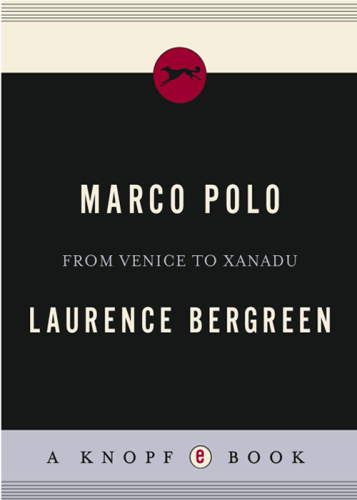
Marco Polo
From Venice to Xanadu
کتاب های مرتبط
- اطلاعات
- نقد و بررسی
- دیدگاه کاربران
نقد و بررسی

July 30, 2007
Even in his own day, the famed 13th-century travel writer Marco Polo was mocked as a purveyor of tall tales—gem-encrusted clothes, nude temple dancing girls, screaming tarantulas—in his narrative of his journey to the Chinese court of the Mongol emperor Kublai Khan. In this engrossing biography, Bergreen (James Agee: A Life
), while allowing that “mere facts... were never enough for Marco,” finds him a roughly accurate and perceptive witness (aside from the romantic embellishments and outright fabrications concocted with his collaborator Rustichello of Pisa) who painted an influential and unusually sympathetic portrait of the much-feared Mongols. Bergreen follows Polo's disjointed commentary on everything from Chinese tax policy to asbestos manufacturing, crocodile hunting and Asian sexual mores—Polo was especially taken with the practice of sharing one's wife with passing travelers—while deftly glossing it with scholarship. Less convincing is Bergreen's attempt to add depth to Polo's “lurid taste and over-heated imagination” by portraying him as both a prophet of globalization and a “pilgrim and explorer of the spirit.” Polo's spiritual trek didn't take him very far, since he ended his days back in Venice as a greedy, litigious merchant. Still, the result is a long, strange, illuminating trip. 16 pages of photos, 3 maps.

September 15, 2007
In 1271, 17-year-old Marco Polo set off from Venice with his father and uncle on an expedition to the court of Kublai Khan, where Marco remained a trusted servant of the Mongol emperor for 17 years. When he returned to Venice, contemporaries didnt believe him: they found his tales fantastic. Years later, languishing in a prison in Genoa, Marco had a writer named Rustichello write down his story. Thus was born his "Travels of Marco Polo", the richest and best of medieval travel books and one of the great adventure stories of all time. Fellow Venetians found it difficult to accept Marcos boasts, but most of what he related was true. Once or twice in this biography, Bergreen ("Over the Edge of the World: Magellans Terrifying Circumnavigation of the Globe") hypothesizes beyond the evidence, e.g., that Marco employed drugs, which imparted unnatural vividness to his narrative, but in general Bergreen is scrupulous in his use of sources; the story he tells is fascinating, even if there is no new analysis. Recommended for general collections.David Keymer, Modesto, CA
Copyright 2007 Library Journal, LLC Used with permission.

Starred review from September 15, 2007
The very name Marco Polo conjures an atmosphere of great adventures in distant locales. Writing a responsible, even definitive biography of the thirteenth-century Italian merchant-cum-adventurer is a tricky proposition. He is known for his two-decades-long journey along the Silk Road to China and residence at the court of the Mongol ruler Kublai Khan, but the question has always remained: How much of Polos written account of his journey is real and how much is made up? Well-established biographer Bergreen begins his exciting reconstruction of the extraordinary life of Marco Polo in the rich context of Venetian life at the time. Marco was born into Venices all-important merchant aristocracy, and trade is what prompted the Polo brothers (Marcos father and uncle) to venture eastward to Asia, with young Marco, only a teenager at the time, in tow. As Bergreen reminds us, the Mongol Empire, especially its paramount leader, the great Kublai Khan, was violent and lawless in Western eyes. Marco came to appreciate the wonders of Mongolian culture and the learned, compassionate side of his host, the emperor. Addressing the issue of how much of what Marco related in his Travels is true, Bergreen finds that although the majority of his accounts were based on firsthand experience, mere facts, however compelling, were never enough for Marco Polo, whose experiences and imagination took him beyond the limits of history. For more information on the writing of this impressively researched and deftly composed biography, see the Story behind the Story.(Reprinted with permission of Booklist, copyright 2007, American Library Association.)

























دیدگاه کاربران